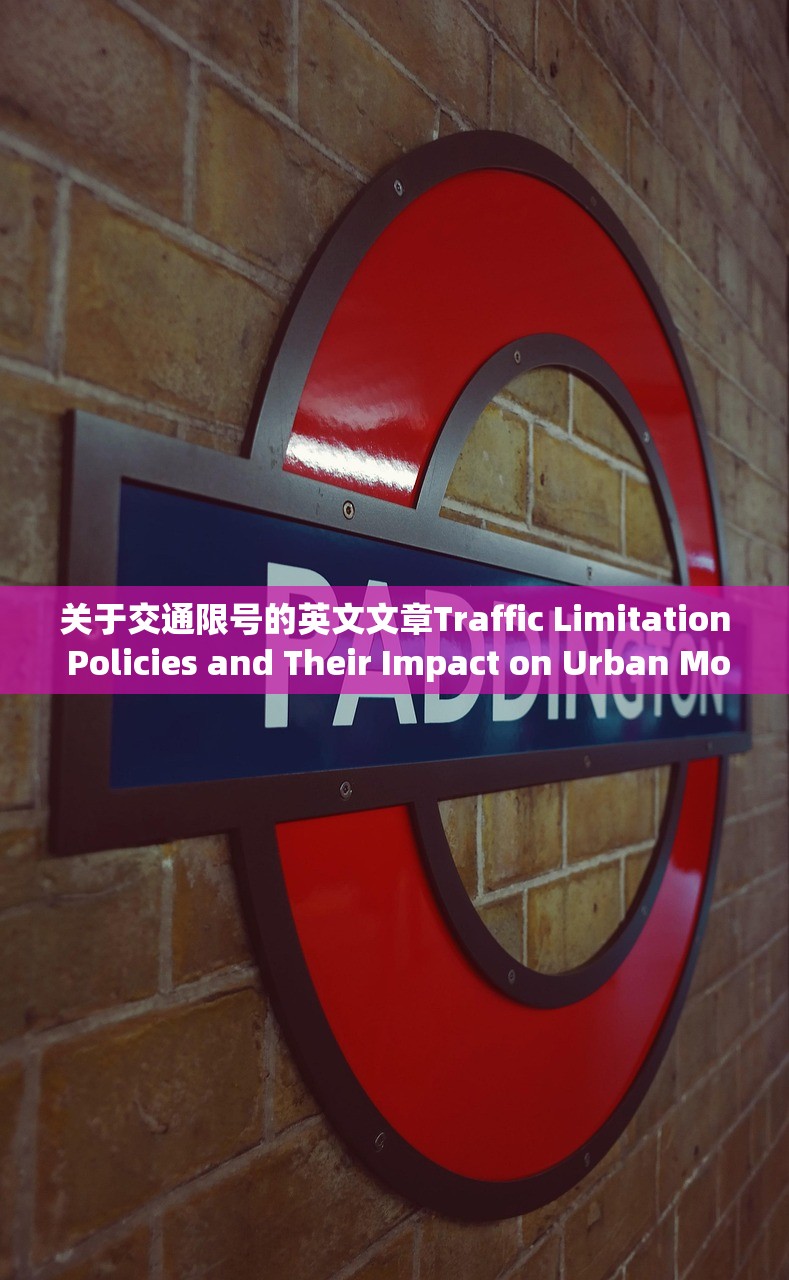关于交通限号的英文文章Traffic Limitation Policies and Their Impact on Urban Mobility
- 出行交通
- 5
In modern urban areas, traffic congestion has become a significant challenge due to the increasing number of vehicles and limited road infrastructure. To mitigate this problem, many cities worldwide have implemented traffic limitation policies, including traffic limit numbers, also known as odd-even license plate systems or alternate day driving restrictions. This article aims to discuss the concept of traffic limit numbers and their impact on urban mobility.
Traffic Limit Numbers, as a part of traffic management strategies, are designed to reduce the number of vehicles on the road during peak hours or specific times of the day. Typically, these policies involve restricting vehicle movement based on the last digit of their license plates. For instance, odd-numbered license plates can drive on certain days while even-numbered ones are restricted. Such systems are implemented to ensure smooth traffic flow and reduce congestion during peak times.

The implementation of traffic limit numbers has both positive and negative impacts on urban mobility. Firstly, it effectively reduces the traffic congestion in cities by limiting the number of vehicles on the road during peak hours. This reduction in traffic flow results in less time spent on the road, reduced fuel consumption, and improved air quality due to reduced emissions from vehicles. Furthermore, it also promotes the use of public transportation, as more people opt for buses, trains, and other mass transit options due to car restrictions.
However, the implementation of traffic limit numbers also brings about certain challenges. One such challenge is the inconvenience caused to those who need to travel regularly and cannot adjust their schedules to match the restrictions. Additionally, some people may choose to violate the rules by driving without considering the consequences, which can lead to increased risks on the road. Furthermore, the impact of such policies on businesses and the economy should also be considered, as it might affect delivery services and other transportation-related industries.
To address these challenges, cities need to strike a balance between implementing effective traffic management strategies and ensuring minimal inconvenience to citizens. This can be achieved by providing alternate modes of transportation such as improving public transportation facilities, encouraging carpooling, and promoting cycling and walking as modes of daily commute. Moreover, awareness programs should be conducted to educate citizens about the importance of following traffic rules and the benefits of adhering to traffic limitation policies.

In conclusion, traffic limitation policies such as traffic limit numbers play a crucial role in managing urban traffic congestion. While they have their own set of challenges, it is essential to strike a balance between effective traffic management and ensuring minimal inconvenience to citizens. By implementing these policies along with other transportation strategies, cities can ensure smooth traffic flow, improved air quality, and overall better urban mobility.





有话要说...